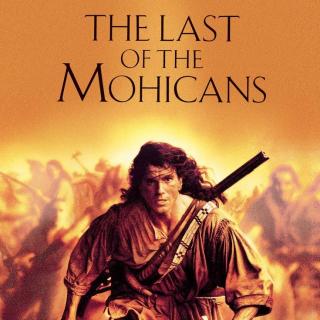
介绍:
CHAPTER III.
“Before these fields were shorn and till’d,
Full to the brim our rivers flow’d;
The melody of waters fill’d
The fresh and boundless wood;
And torrents dash’d, and rivulets play’d,
And fountains spouted in the shade.”—Bryant
Leaving the unsuspecting Heyward and his confiding companions to penetrate still deeper into a forest that contained such treacherous(背叛的; 奸诈的) inmates, we must use an author’s privilege, and shift the scene a few miles to the westward of the place where we have last seen them.
On that day, two men were lingering on the banks of a small but rapid stream, within an hour’s journey of the encampment of Webb, like those who awaited the appearance of an absent person, or the approach of some expected event. The vast canopy(天篷似的树荫) of woods spread itself to the margin of the river, overhanging the water, and shadowing its dark current with a deeper hue. The rays of the sun were beginning to grow less fierce, and the intense heat of the day was lessened, as the cooler vapors(水气) of the springs and fountains rose above their leafy beds, and rested in the atmosphere. Still that breathing silence, which marks the drowsy sultriness of an American landscape in July, pervaded the secluded spot, interrupted only by the low voices of the men, the occasional and lazy tap of a woodpecker, the discordant cry of some gaudy jay, or a swelling on the ear, from the dull roar of a distant waterfall. These feeble and broken sounds were, however, too familiar to the foresters to draw their attention from the more interesting matter of their dialogue. While one of these loiterers showed the red skin and wild accouterments of a native of the woods, the other exhibited, through the mask of his rude and nearly savage equipments, the brighter, though sun-burned and long-faced complexion of one who might claim descent from a European parentage. The former was seated on the end of a mossy(长满苔藓的) log, in a posture that permitted him to heighten the effect of his earnest language, by the calm but expressive gestures of an Indian engaged in debate. His body, which was nearly naked, presented a terrific emblem of death, drawn in intermingled colors of white and black. His closely-shaved head, on which no other hair than the well-known and chivalrous scalping tuft[1] was preserved, was without ornament of any kind, with the exception of a solitary eagle’s plume, that crossed his crown, and depended over the left shoulder. A tomahawk(印第安战斧) and scalping knife, of English manufacture, were in his girdle; while a short military rifle, of that sort with which the policy of the whites armed their savage allies, lay carelessly across his bare and sinewy knee. The expanded chest, full formed limbs, and grave countenance of this warrior, would denote that he had reached the vigor of his days, though no symptoms of decay appeared to have yet weakened his manhood.
[1] The North American warrior caused the hair to be plucked from his whole body; a small tuft was left on the crown of his head, in order that his enemy might avail himself of it, in wrenching off the scalp in the event of his fall. The scalp was the only admissible trophy of victory. Thus, it was deemed more important to obtain the scalp than to kill the man. Some tribes lay great stress on the honor of striking a dead body. These practices have nearly disappeared among the Indians of the Atlantic states.
大家还在听

